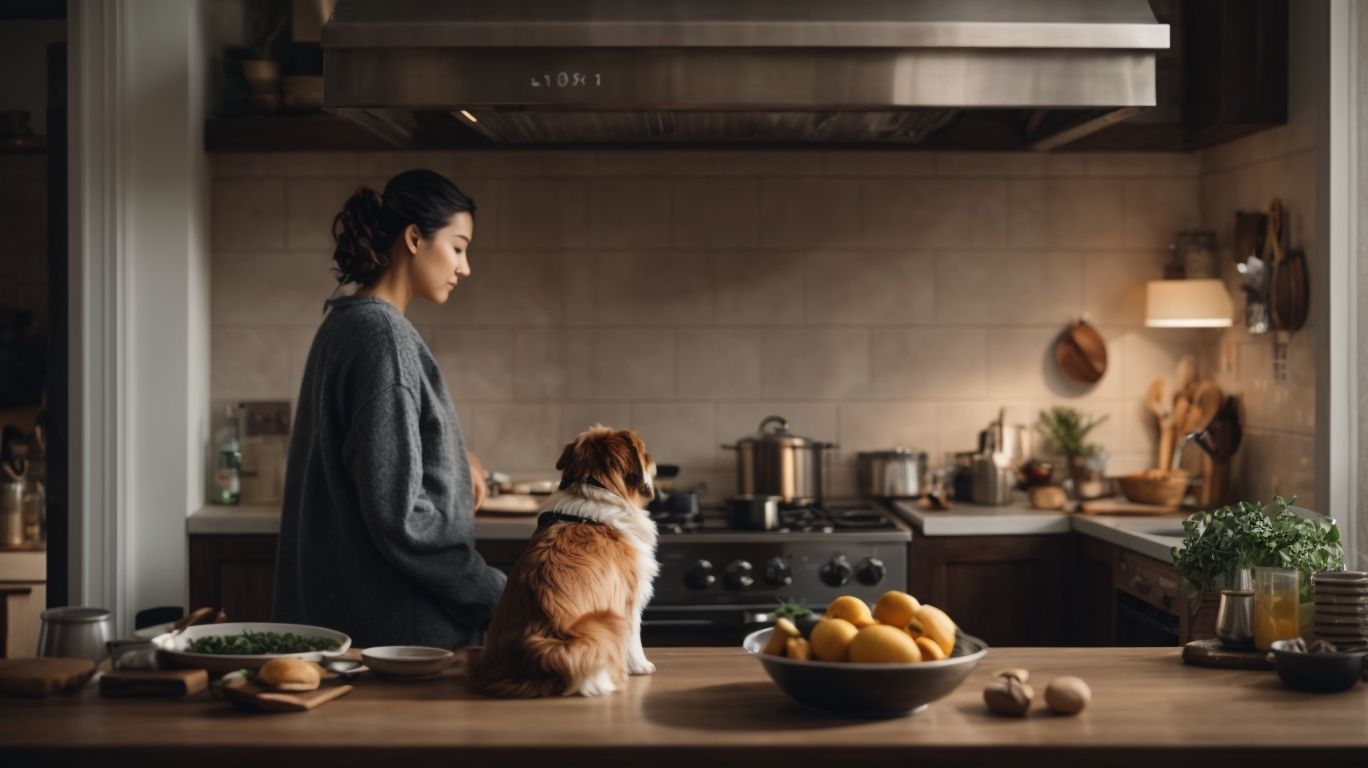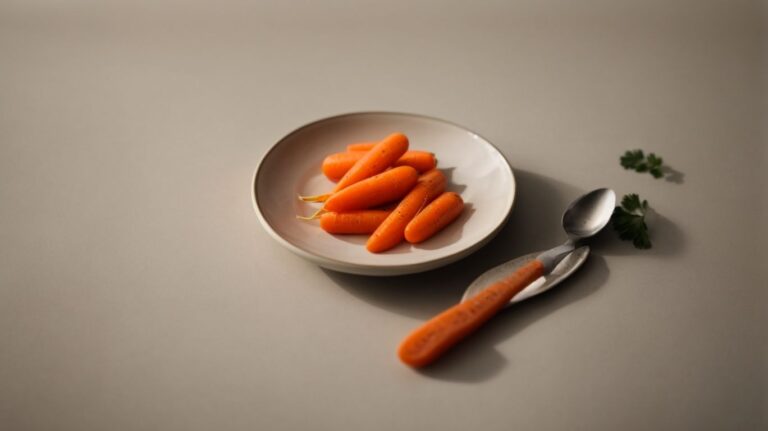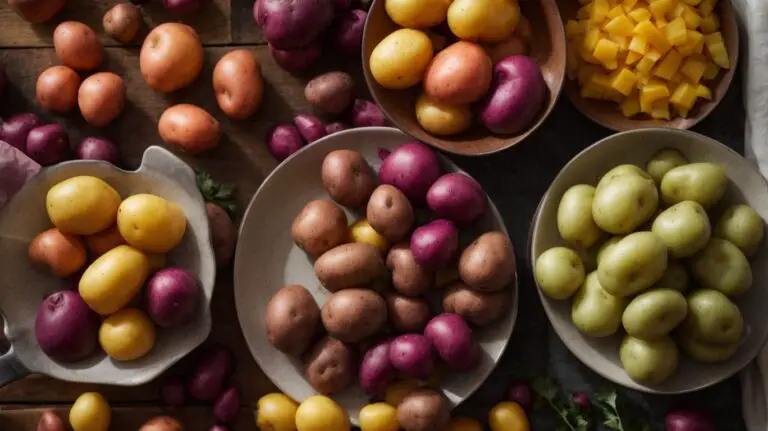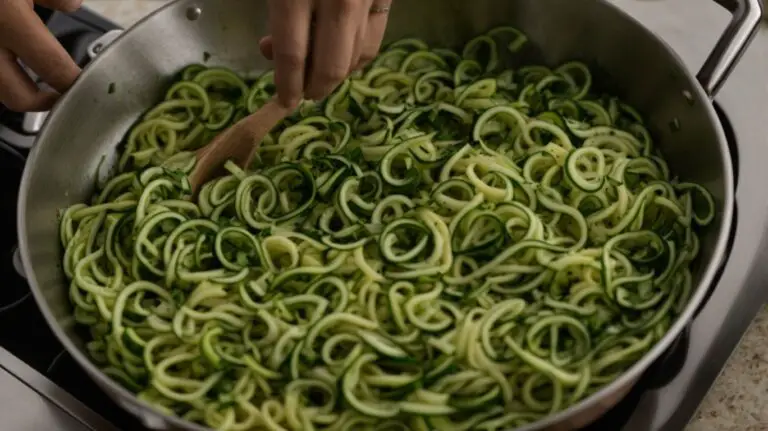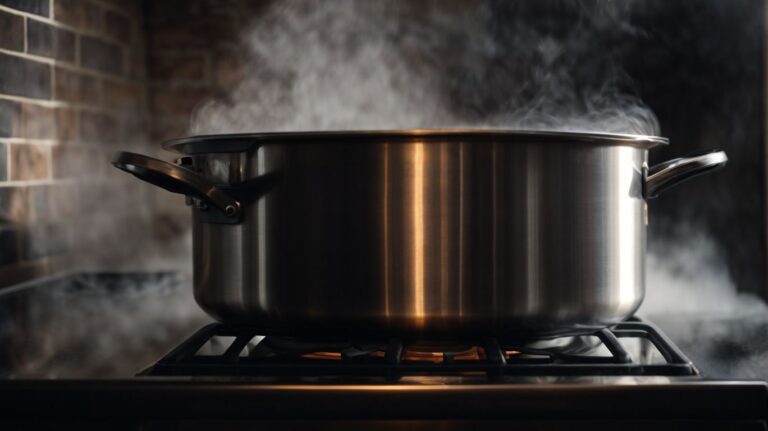How to Cook for Your Dog?
Are you looking to provide your furry friend with a nutritious and wholesome diet?
Cooking for your dog can have numerous benefits, from improving their health to strengthening your bond.
We will explore why cooking for your dog is a great idea, what foods are safe for them, what foods to avoid, how to plan a balanced diet, tips for cooking, and even share some delicious homemade dog food recipes.
Learn how you can cater to your pup’s dietary needs and keep them happy and healthy!
Key Takeaways:
Why Cook for Your Dog?
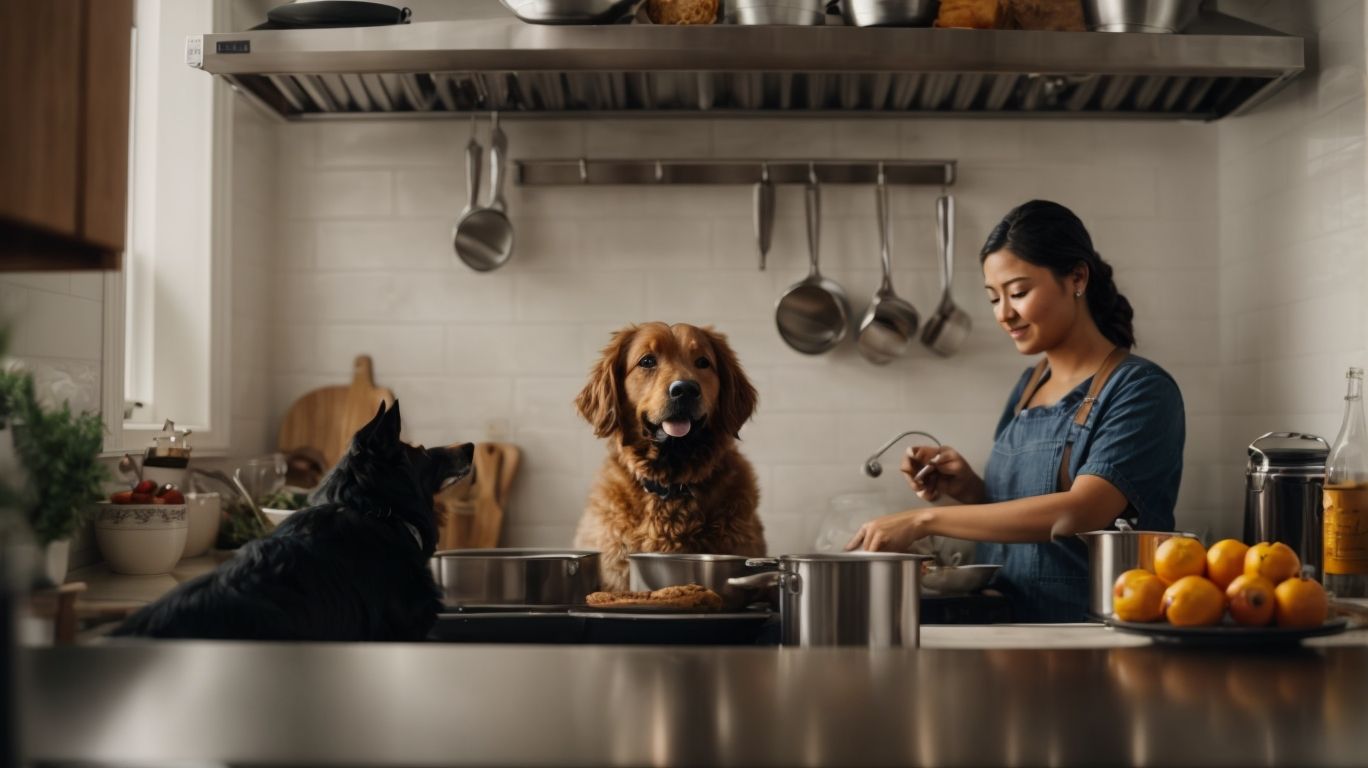
Credits: Poormet.Com – Kevin Walker
Cooking for your dog offers numerous health benefits and allows you to have control over the ingredients in their meals, ensuring a balanced and nutritious diet tailored to your pet’s needs.
When you prepare homemade food for your furry friend, you can select high-quality ingredients and avoid additives or fillers often found in commercial pet foods. This control over the recipe gives you the flexibility to adjust portion sizes, address any dietary restrictions your dog might have, and cater to their taste preferences.
By incorporating nutritious recipes into your dog’s meals, you can enhance their overall well-being. Homemade meals can support your dog’s immune system, promote healthy digestion, maintain ideal weight, and contribute to a shiny coat and strong teeth.
Health Benefits
Cooking for your dog can lead to improved health outcomes, better nutrition, and a balanced diet that caters to your pet’s specific dietary needs and overall well-being.
When you prepare meals for your furry friend, you have the power to control the quality and freshness of the ingredients, ensuring that every bite supports their health. By choosing wholesome, natural ingredients and avoiding preservatives and additives common in commercial pet foods, you can reduce the risk of allergies and digestive issues.
Crafting balanced meals for your dog allows you to tailor their diet to meet their individual nutritional requirements, promoting weight management, muscle growth, and overall vitality. Not only does home-cooked food provide essential vitamins and minerals, but it also offers the added benefit of flavor variety, keeping your pet engaged during mealtime.
Control over Ingredients
By cooking for your dog, you gain control over the quality and safety of the ingredients used, ensuring a balanced and safe diet for your beloved pet.
When you prepare homemade dog food, you can customize the ingredients to cater to your dog’s specific dietary needs, whether it be food allergies, sensitivities, or preferences. This level of personalization is often lacking in commercial dog food products, which may contain fillers, preservatives, or additives that are not always beneficial for your pet’s health.
By overseeing the cooking process yourself, you can ensure that the food is handled and prepared under hygienic conditions, reducing the risk of contamination that can occur in mass-produced dog food. This extra care and attention to detail can go a long way in safeguarding your furry companion’s well-being.
Bonding with Your Dog
Cooking for your dog fosters a deeper bond between you and your pet while also promoting their health and well-being, strengthening the relationship and trust between you.
Preparing meals for your furry companion provides an opportunity to show love and care through tailored nutrition, ensuring they receive the best possible diet.
By understanding your dog’s specific dietary needs, you can customize recipes to address any health concerns or preferences, guaranteeing their overall happiness and vitality.
This hands-on approach to feeding not only nurtures your pup’s physical health but also nurtures the emotional connection between you, creating memorable shared experiences that deepen your bond.
What Foods are Safe for Dogs?

Credits: Poormet.Com – Harold Ramirez
Knowing what foods are safe for dogs is essential to providing them with a balanced diet rich in protein, vegetables, and essential carbohydrates that support their overall health and well-being.
Regarding protein sources, lean meats such as chicken, turkey, and beef are excellent options for dogs. These meats provide essential amino acids necessary for muscle growth and repair. Along with meats, eggs are a great source of high-quality protein for dogs.
For vegetable options, leafy greens like spinach and kale are packed with essential vitamins and minerals, while carrots and sweet potatoes offer a good dose of fiber and antioxidants. These veggies can be steamed or pureed to make them more palatable for your furry friend.
When incorporating carbohydrates into your dog’s diet, opt for whole grains like brown rice or quinoa. These complex carbohydrates provide sustained energy and can help regulate blood sugar levels in dogs. Avoid processed grains and opt for whole, unprocessed options to ensure your dog gets the most nutritional benefits.
Protein Sources
Protein sources such as beef, turkey, chicken, and lamb are essential for your dog’s diet, providing them with the necessary nutrients for optimal health and energy levels.
Fish like salmon and tuna can also be excellent sources of protein for dogs. Not only do protein-rich foods help in muscle development and overall growth, but they also support a strong immune system and healthy skin and coat. The website BalanceIT.com offers valuable insights into formulating balanced homemade diets for pets, emphasizing the significance of incorporating varied protein sources to meet their dietary requirements.
Vegetables and Fruits
Incorporating vegetables like broccoli, carrots, and cauliflower into your dog’s meals can offer essential vitamins and minerals, promoting their overall health and well-being.
These nutritious additions provide a range of benefits for your furry friend. Broccoli is packed with vitamin C and fiber, aiding in digestion and immune support. Carrots offer beta-carotene, promoting eye health, while cauliflower contains choline, supporting brain function. Including a variety of colorful vegetables not only adds flavor and texture but also delivers a spectrum of nutrients essential for your dog’s vitality.
When preparing homemade dog food, opting for whole ingredients ensures that your pup receives the maximum nutritional value. The freshness and quality of these ingredients, free from additives and preservatives, can contribute significantly to your dog’s overall well-being. By incorporating a diverse selection of vegetables and fruits, you can tailor your dog’s diet to meet their specific nutritional needs and enhance their overall health.
Grains and Carbohydrates
Grains and carbohydrates can be a valuable source of energy for dogs, but it’s essential to choose safe and healthy options that meet their dietary requirements and support their overall well-being.
When considering grains and carbohydrates for dog nutrition, opting for whole grains like brown rice, oats, and quinoa can provide essential nutrients such as fiber, vitamins, and minerals. These complex carbohydrates offer sustained energy levels for your furry friend, aiding in digestion and maintaining a healthy weight. Incorporating vegetables like sweet potatoes and peas into their diet can offer alternative carbohydrate sources while adding variety and flavor to their meals.
What Foods Should Be Avoided?

Credits: Poormet.Com – Kenneth Smith
Avoiding toxic foods, those high in fat or salt, and ingredients that can be harmful to dogs is crucial for maintaining their health and preventing potential health issues.
When cooking for your furry friend, steer clear of foods such as onions, garlic, grapes, and raisins which are toxic to dogs and can lead to severe health problems.
Fatty foods like bacon, sausages, or fried items can cause upset stomachs, obesity, and even pancreatitis in dogs, so it’s vital to avoid feeding them.
- Be cautious with foods high in salt content like deli meats, chips, and salty snacks, as excessive salt can lead to dehydration and sodium ion poisoning in dogs.
Toxic Foods
Certain foods like chocolate, grapes, and onions can be toxic to dogs, making it essential to be aware of safe alternatives and prioritize your pet’s health and well-being.
It is crucial for pet owners to understand the dangers of feeding these harmful foods to their canine companions. Chocolate, in particular, contains theobromine and caffeine, which can lead to severe reactions in dogs, ranging from vomiting to seizures and even death.
Instead of chocolate, consider treating your furry friend with dog-friendly options such as carob, which is a safe alternative and can satisfy their sweet cravings without any health risks.
Grapes and raisins are also notorious for causing kidney failure in dogs. It’s vital to keep these fruits away from your pet’s reach and opt for alternatives like blueberries or strawberries, which are not only delicious but also safe for their consumption.
Foods with High Fat Content
Foods with high fat content can lead to weight issues in dogs, so it’s crucial to focus on meal ideas that promote a healthy weight and provide essential nutrients for their well-being.
When considering a balanced diet for your furry companion, it’s recommended to include lean proteins such as chicken or turkey, as well as whole grains like brown rice or quinoa. These ingredients not only offer a good source of energy but also help in maintaining muscle mass without the excess fat content. Incorporating a variety of vegetables like carrots, green beans, and sweet potatoes can further enhance the nutrient profile of the meals, offering vitamins, minerals, and fiber. It’s important to consult with a veterinarian or pet nutritionist to tailor a meal plan that suits your dog’s specific needs and supports their overall health.
Foods with High Salt Content
Foods with high salt content can disrupt a dog’s balanced diet and may lead to health issues related to phosphorus and calcium levels, so it’s essential to monitor and limit their salt intake.
Excessive salt in a dog’s diet can strain their kidneys as they work harder to process the increased sodium levels. This can lead to dehydration, electrolyte imbalances, and high blood pressure, posing serious risks to their overall health. Consistent high salt intake can also affect their bone health by interfering with the proper absorption of essential minerals like phosphorus and calcium.
To avoid these problems, ensure you check ingredient labels for sodium content and opt for low-salt or salt-free dog foods. And remember, moderation is key when it comes to monitoring and limiting salt in your dog’s diet.
How to Plan a Balanced Diet for Your Dog?
Planning a balanced diet for your dog involves consulting with a veterinarian to determine their nutritional needs and create a customized meal plan that supports their overall health and helps maintain a healthy weight.
Nutrient considerations are crucial when planning your dog’s diet. Ensuring they receive the right balance of proteins, carbohydrates, fats, vitamins, and minerals is essential for their well-being. Your veterinarian will help you understand the specific requirements based on your dog’s age, breed, activity level, and any existing health conditions. With this information, you can tailor their meals to provide optimal nutrition.
Consult with a Veterinarian
Before embarking on a homemade diet for your dog, it’s crucial to consult with a veterinarian to assess their dietary needs, ensure nutritional balance, and address any specific health concerns.
When creating a homemade dog diet, a veterinarian’s expertise can help tailor the meal plan to your furry friend’s unique requirements.
Veterinarians can provide valuable insights into the ideal nutrient ratios, suitable ingredients, and portion sizes to maintain your dog’s optimal health. They can also help identify any underlying health conditions that might require dietary adjustments.
By working closely with a veterinarian, you can ensure that your dog’s homemade diet meets all their nutritional needs and supports their overall well-being.
Determine Your Dog’s Nutritional Needs
Understanding your dog’s nutritional needs, potential allergies, and dietary requirements is essential for creating a meal plan that aligns with their health goals and supports their overall well-being.
When considering your dog’s nutrition, it’s crucial to take into account their breed, age, weight, and activity level to determine the right balance of proteins, fats, carbohydrates, vitamins, and minerals.
Each dog is unique, and their dietary restrictions, such as sensitivities to certain ingredients or food intolerances, must be carefully considered to prevent adverse reactions.
Creating a balanced diet tailored to your dog’s specific health concerns can help improve their digestion, energy levels, coat condition, and overall quality of life.
Create a Meal Plan
Developing a customized meal plan for your dog involves careful consideration of their dietary requirements, preparation methods, and safety measures to ensure that each meal contributes to a balanced and healthy diet.
One essential aspect to keep in mind is the nutritional balance of the meals. Dogs require a mix of proteins, carbohydrates, fats, vitamins, and minerals for optimal health. Creating a well-rounded menu ensures they receive all the necessary nutrients. It’s vital to address any specific dietary needs or restrictions your dog may have, whether due to allergies, medical conditions, or breed predispositions.
Moreover, meal preparation safety is paramount. Always use fresh, high-quality ingredients, and follow proper cooking techniques to prevent contamination. Adequate storage practices are crucial to avoid spoilage and foodborne illnesses.
Tips for Cooking for Your Dog
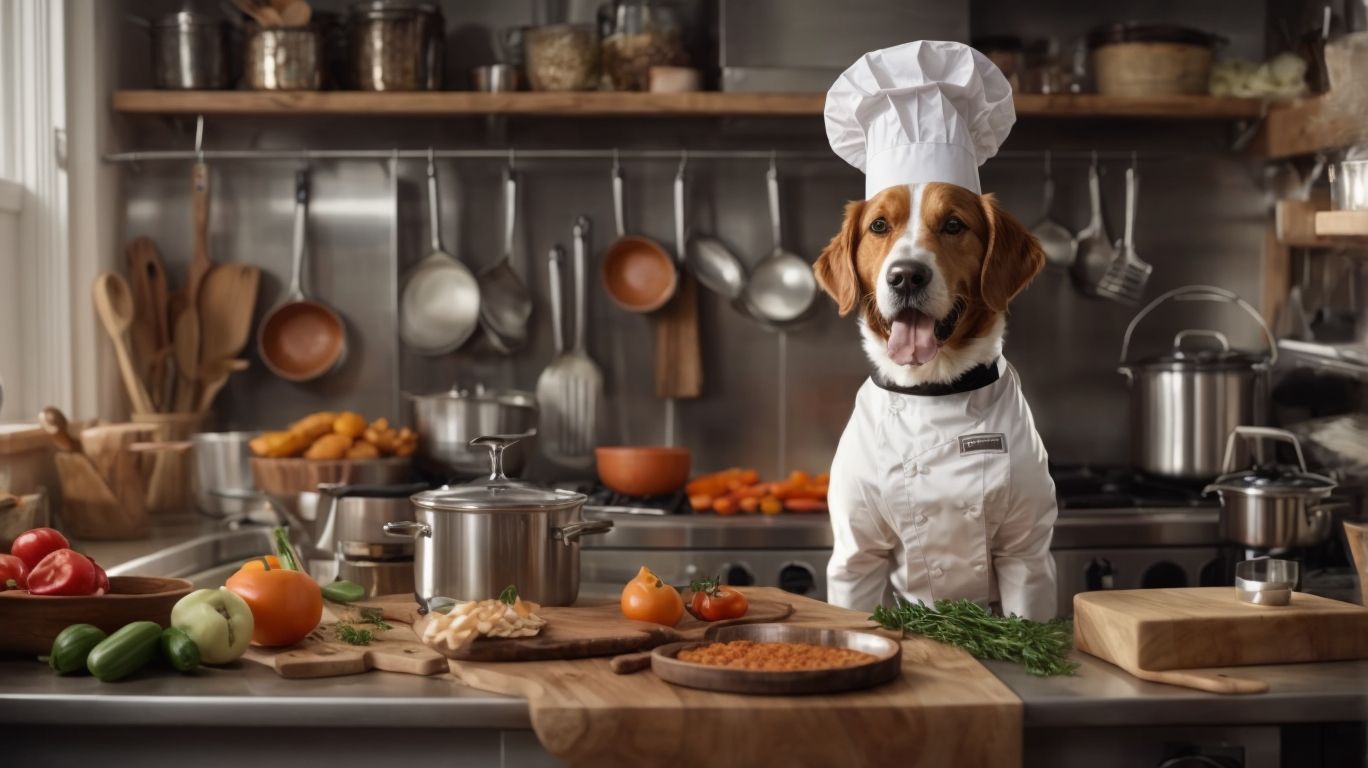
Credits: Poormet.Com – Vincent Green
When cooking for your dog, it’s essential to focus on proper food preparation techniques, practice portion control, and be mindful of common allergens that may affect your pet’s health.
Properly preparing homemade dog food involves selecting fresh, high-quality ingredients that provide a balanced diet for your furry friend. Ensuring these ingredients are cooked thoroughly, without seasoning or additives that may be harmful to dogs, is vital.
Portion control is key to preventing obesity or malnourishment, so calculate the appropriate serving sizes based on your dog’s size and activity level. Paying attention to potential allergens such as grains, dairy, or certain proteins can help avoid any adverse reactions and promote a healthier diet for your pet.
Proper Food Preparation
Ensuring proper food preparation techniques and following safety guidelines are crucial when making homemade dog food to maintain the nutritional quality and safety of the meals.
It is important to understand that proper food handling practices help prevent contamination and keep your dog healthy. Always wash your hands and utensils thoroughly before and after preparing meals to avoid any potential risks.
Additionally, maintaining nutritional quality is key for your dog’s overall well-being. Ensuring a balanced diet with the right mix of proteins, carbohydrates, fats, and essential nutrients is essential.
For further guidance and expert advice on pet food preparation, websites like BalanceIT.com offer valuable resources and tools to help you provide the best nutrition for your furry friend.
Portion Control
Practicing portion control is essential to ensure that your dog receives the right balance of nutrients in each meal, supporting their overall health and meeting their specific dietary needs.
By carefully measuring out the quantities of protein, carbohydrates, fats, and essential vitamins and minerals, you can prevent undernourishment or overfeeding, both of which can lead to health issues. Portion control also helps in managing your canine companion’s weight effectively, preventing obesity and related conditions.
Considering the dietary requirements of dogs, portion control is critical in preventing deficiencies or excesses of nutrients that can impact their well-being.
Consulting a veterinarian or a pet nutritionist can provide you with tailored guidance on determining the right portion sizes based on your dog’s breed, size, age, and activity level.
Avoiding Common Allergens
Identifying and avoiding common allergens in your dog’s meals is crucial to prevent adverse reactions and ensure that your pet’s dietary requirements are met without compromising their health.
When preparing homemade dog food,
- diligently check
the ingredients for potential allergens such as grains like wheat or corn, as well as common proteins like chicken or beef. Substituting these with
- novel proteins
like duck or rabbit can be a safer alternative for dogs with food sensitivities.
- Steer clear of artificial
additives, preservatives, and colorings as they can trigger reactions in sensitive pets. Opt for natural ingredients and carefully read labels to protect your furry friend from potential harm.
Recipes for Homemade Dog Food
Preparing homemade dog food can be a rewarding experience, offering the opportunity to create nutritious meals tailored to your pet’s needs, such as Chicken and Rice, Beef and Sweet Potato, and Salmon and Quinoa.
Homemade Chicken and Rice dog food is a popular choice, providing a great source of protein and carbohydrates. To prepare this meal, cook chicken with brown rice in a pot, then dice the chicken and mix it with the rice. This recipe ensures a well-balanced meal for your furry friend.
For Beef and Sweet Potato dog food, start by browning ground beef in a pan, then add cooked sweet potatoes and some vegetables like peas and carrots. This dish is not only tasty but also packed with essential nutrients.
Salmon and Quinoa dog food is a high-protein option rich in omega-3 fatty acids. Cooked quinoa mixed with baked salmon makes a wholesome meal for your dog, promoting a shiny coat and overall well-being.
Chicken and Rice
Chicken and Rice is a classic homemade dog food recipe that provides essential vitamins, minerals, and protein for your pet’s health and well-being.
In this recipe, the chicken serves as a high-quality source of protein, which is vital for your furry friend’s muscle development and overall strength. Chicken also offers important nutrients like omega-3 fatty acids, promoting a healthy coat and skin for your dog. Combining it with rice complements the protein with carbohydrates for energy, as well as fiber for digestion. The balance of protein and carbohydrates in this meal provides sustained energy for your pet throughout the day.
Beef and Sweet Potato
Beef and Sweet Potato is a flavorful homemade dog food option that offers a mix of nutrients, including protein from beef and vitamins from sweet potatoes, ensuring a well-rounded meal for your pet.
Using beef as the primary protein source contributes to muscle development and energy for your dog.
Sweet potatoes are a rich source of fiber, which aids in digestion and promotes a healthy gastrointestinal tract.
Combining these ingredients creates a balanced meal that supports your pet’s overall health. To prepare this nutritious meal, start by cooking 2 cups of diced beef and 1 cup of mashed sweet potatoes. Mix them together in a bowl and serve according to your dog’s portion size.
Salmon and Quinoa
Salmon and Quinoa is a nutritious homemade dog food recipe rich in omega-3 fatty acids from salmon and protein from quinoa, supporting your pet’s overall health and vitality.
Omega-3 fatty acids are essential for your dog’s immune system, coat health, and brain function, all of which are abundantly present in this recipe.
Quinoa provides a complete protein source, crucial for muscle development and repair, making it an excellent alternative to traditional grain-based diets.
Integrating this wholesome meal into your pet’s diet can significantly improve their energy levels, promote a shiny coat, and aid in digestion due to its rich nutrient profile.
Frequently Asked Questions
How to Cook for Your Dog?
Cooking for your dog is a great way to provide them with a healthy and balanced diet. Below are answers to some common questions about cooking for your furry friend.
1. Is it safe to cook for my dog?
Yes, it is safe and beneficial to cook for your dog. Homemade meals can provide your dog with essential nutrients and can help prevent health issues caused by processed dog food.
2. How do I know what ingredients are safe for my dog?
It is important to research and consult with your veterinarian before cooking for your dog. Some ingredients that are safe for humans, such as onions and garlic, can be toxic to dogs.
3. Can I use the same ingredients in my dog’s meals as I do in mine?
No, not all human foods are safe for dogs. Some common ingredients in human food, like chocolate, grapes, and avocado, can be toxic to dogs. It is best to stick to dog-friendly ingredients for your furry friend.
4. How much should I feed my dog?
The amount of food you should feed your dog depends on their size, age, and activity level. It is best to consult with your veterinarian to determine the appropriate portion size for your dog.
5. Is it okay to give my dog table scraps?
It is not recommended to give your dog table scraps. These foods are often high in fat and can cause gastrointestinal issues for your dog. Stick to dog-friendly ingredients that are nutritionally balanced.
6. Can I prepare meals for my dog in advance?
Yes, you can prepare meals for your dog in advance and store them in the refrigerator or freezer. Be sure to follow proper food safety guidelines and consult with your veterinarian for the appropriate storage and reheating methods.

